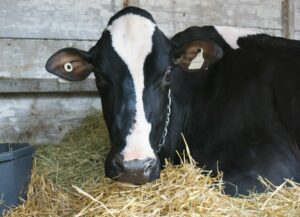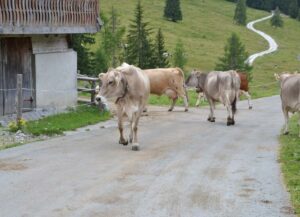Nuria Garcia
Commercial dairy cattle farms generally replace 30% of their herd each year. Although many of these cows are healthy, farms decide to cull them because of their low reproduction or production performances; others are removed because of injuries or clinical illnesses.
Because of the effect health has on production, some of these cows have an underlying condition, and it can be concluded that compromised health represents one of the main culling reasons.
A recent Canadian report found that 56% of cow culls were made for known reasons, including mastitis (19%), hoof and leg problems (12%), and disease (8%).
Given the risk these conditions pose to animal well-being, the decision of when and how each cow should be discarded becomes particularly important. In addition, transportation is a stressful time for livestock regardless of their health status.
In large countries such as Canada and the U.S., transportation is a major risk factor that contributes to compromise animal health. In fact, the most important risk factors have been shown to be prolonged transportation times (more than 30 hours), long distances (more than 400 km), ambient temperatures above 20°C, and high population density.
Since it is possible that the animal condition worsens during transport, a producer’s assessment of whether an animal is fit for transport or not is of paramount importance since this decision may have a significant effect on cows’ health and well-being.
The objective of this study, published in the Journal of Dairy Science in 2020, was to describe the factors that influence the Canadian producers’ decision to remove a cow from the herd.
A nationwide survey of 192 questions was conducted including information on the producer, farm characteristics, biosecurity practices, disease prevalence, calves’ health, cow well-being, lameness, milking hygiene, reproduction, and the use of the Internet and social media.
The survey had a response rate of 12%. Of the 1,076 respondents to this study, approximately 80, 51 and 38% reported sending at least one cow to auction, directly to slaughter or to another farm, respectively.
Dairy farmers send cows to slaughter for the cow’s incapacity to stand
Factors identified as most important in sending a cow to slaughter were the cow’s ability to stand (93% of respondents) and drug withdrawal period (92% of respondents). The time elapsed between the decision to slaughter an animal and the time the cow was transported was longer for lame than for sick cows.
In fact, nearly 70% of respondents said sick cows were sent to slaughter in the week following the decision to dispose of them, while only 51% of respondents indicated this same timeframe for cows suffering from lameness.
Finally, Canadian milk producers showed great confidence that their cows would reach the slaughterhouse in the same condition in which they left their farms, but when asked they were unsure if they knew their destination.
These results highlight the gap between a producer’s perception and the actual situation and can be used to develop tailor-made programs and report on the adoption of regulations to improve the decision as to when to send cows to slaughter and their well-being.
Reference
Roche SM, Renaud DL, Genore R, Shock DA, Bauman C, Croyle S, Barkema HW, Dubuc J, Keefe GP, Kelton DF. 2020. Canadian National Dairy Study: Describing Canadian dairy producer practices and perceptions surrounding cull cow management. J. Dairy Sci. 103:3414–3421.
© 2020 Dairy Knowledge Center. All Rights Reserved.











